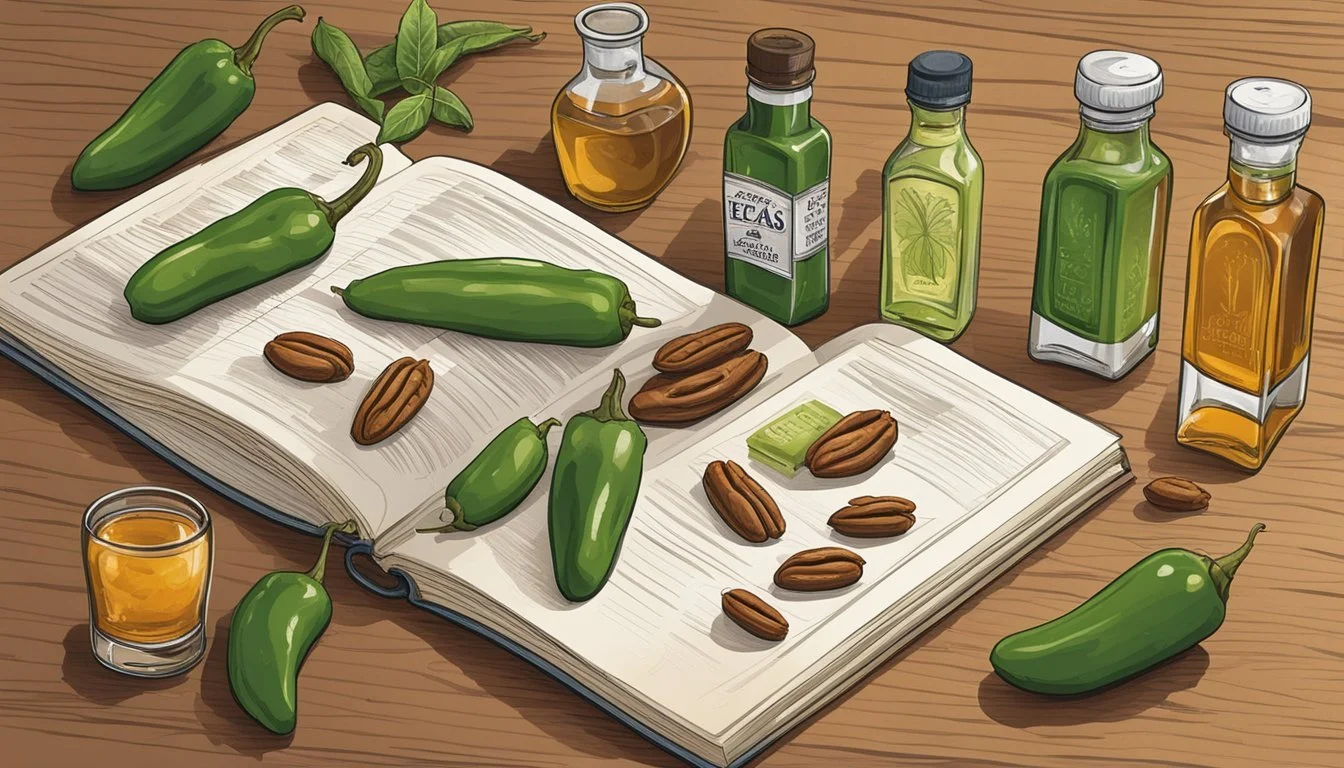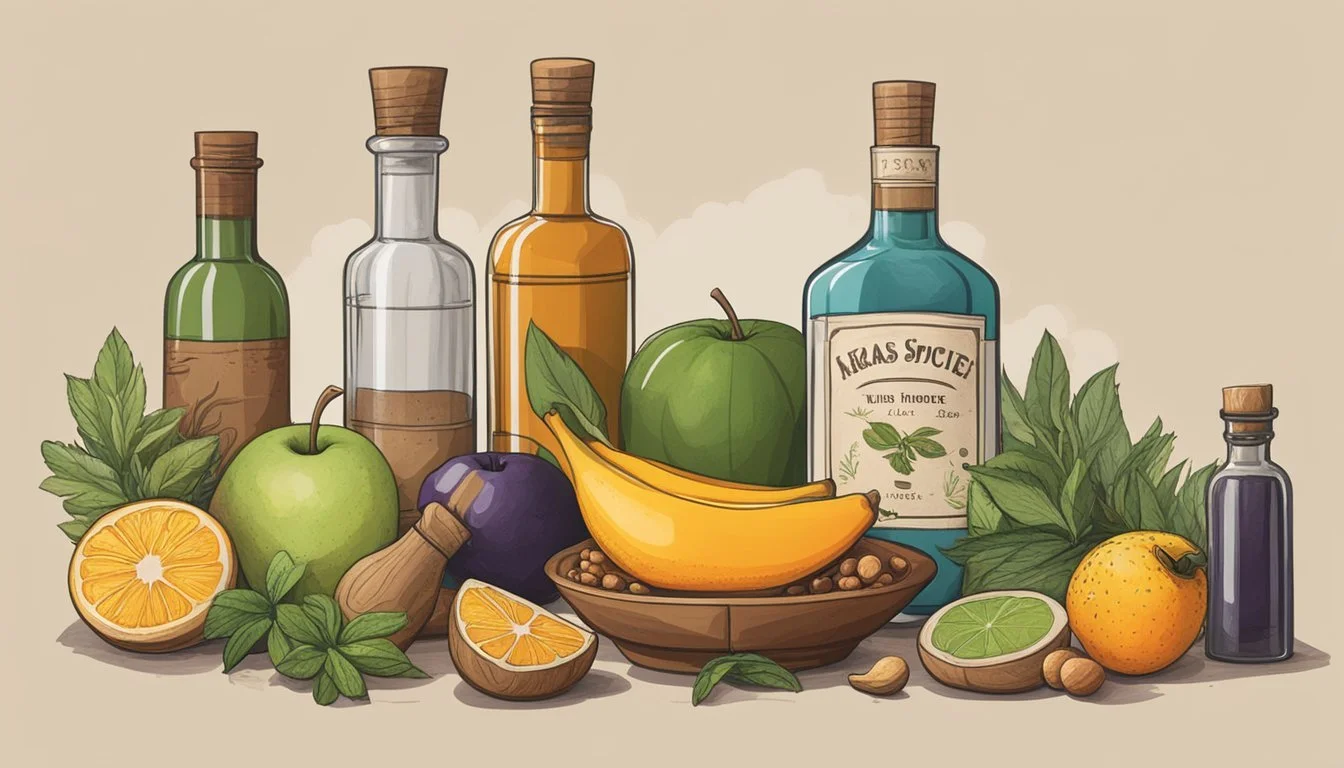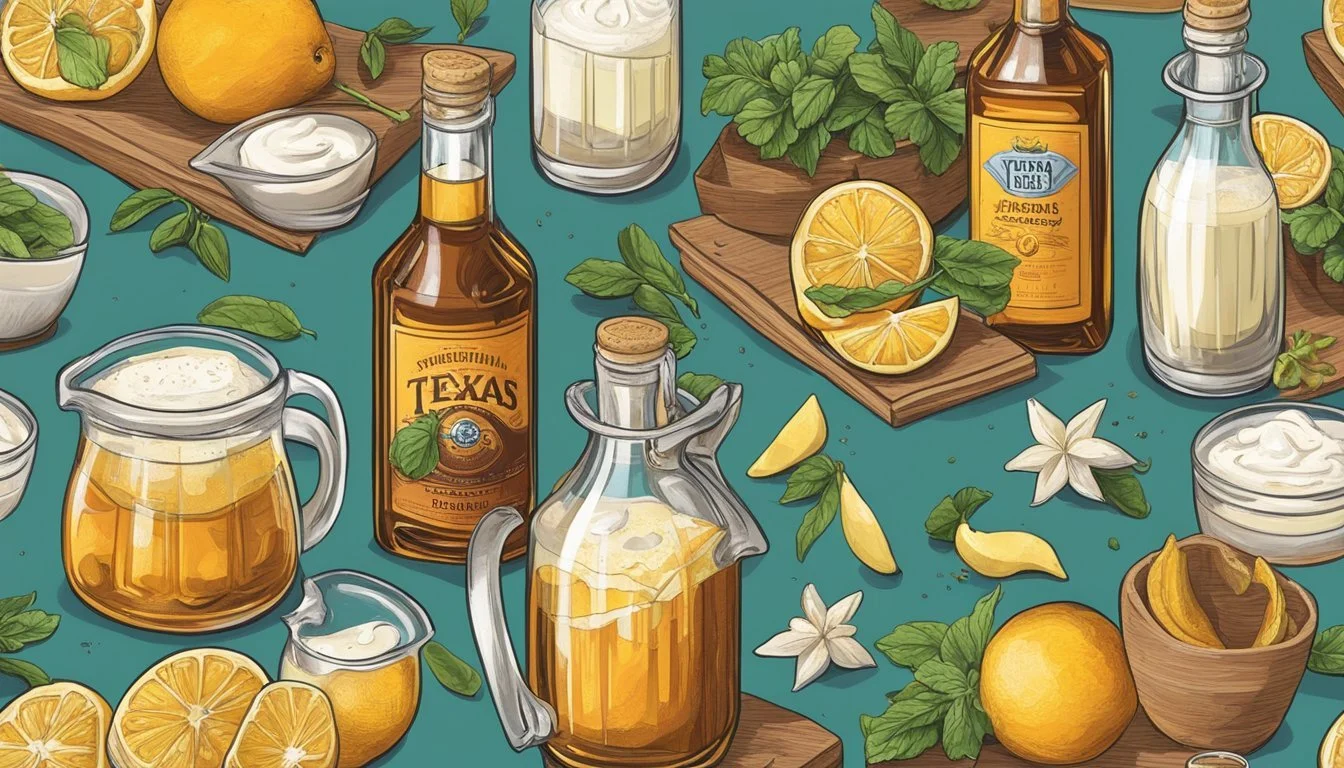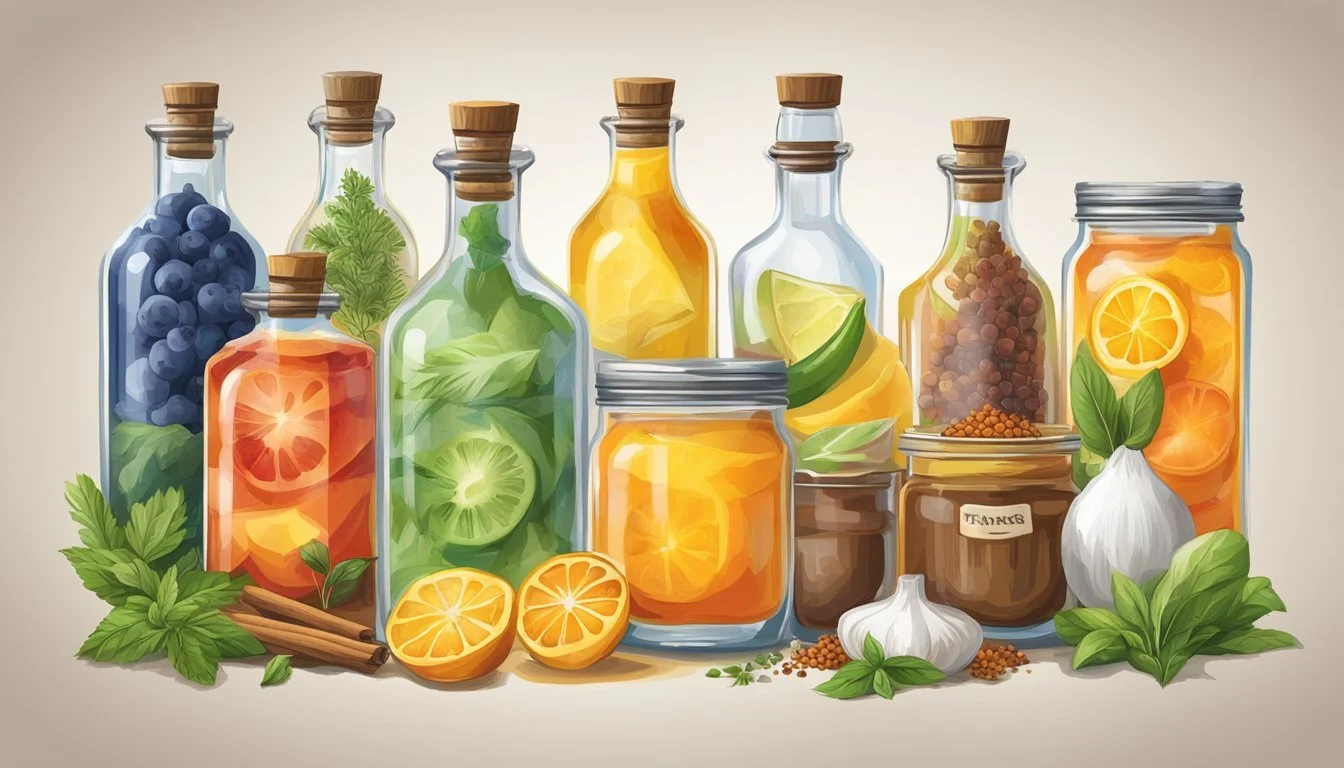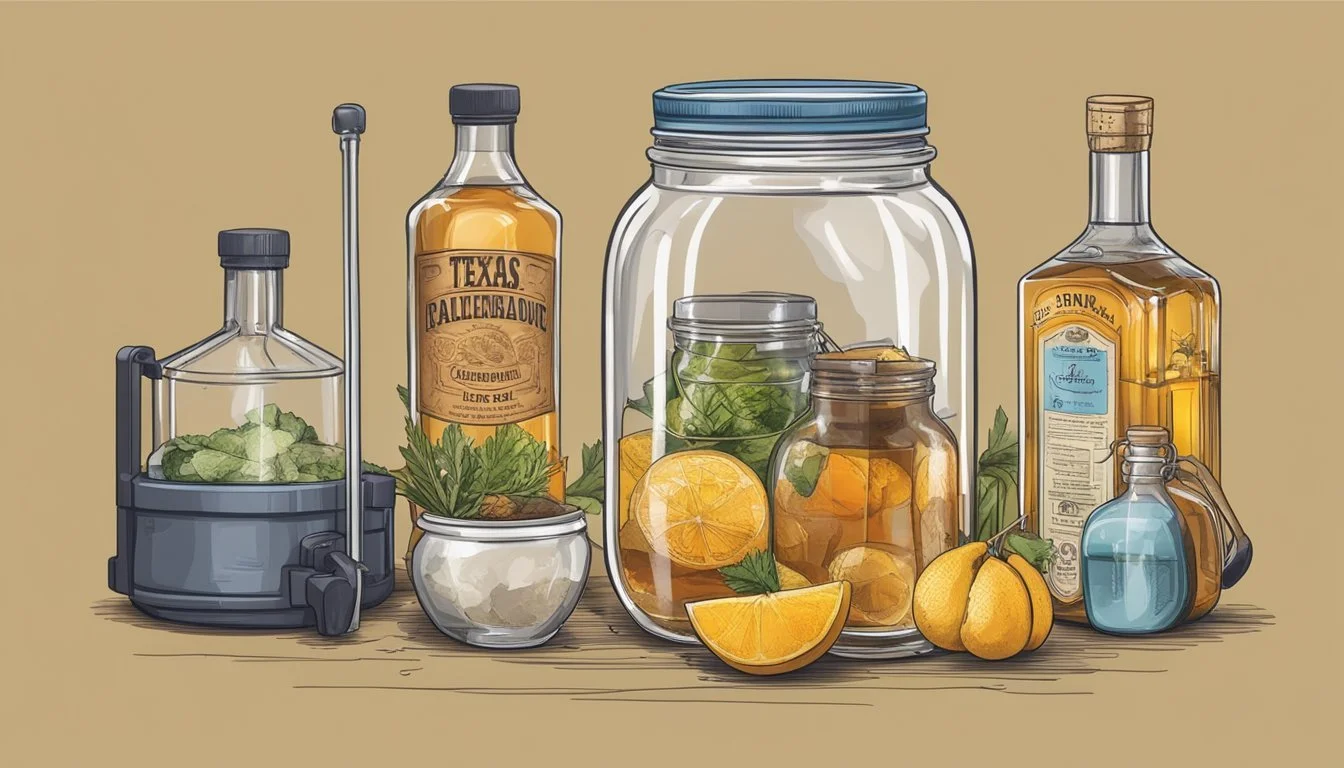The Art of Infusing Liquors with Texas Ingredients
A Guide to Lone Star Flavors
Infusing liquors is an art that transforms the ordinary into the extraordinary, elevating flavors through patience and creativity. In Texas, the practice taps into a rich tapestry of local ingredients, blending the state’s agriculture with its culture to create unique, nuanced spirits. From the succulent sweetness of Hill Country peaches to the bold kick of West Texas jalapeños, native elements infuse liquors with a distinct Texan flair.
As aficionados seek deeper, more complex tastes, the infusion process offers endless possibilities to customize and enhance the flavor profile of spirits. Whether experimenting with bourbon or vodka, the infusion of local Texan ingredients provides a canvas for the imagination. By selectively pairing these spirits with fresh, regional produce and aromatic herbs, one cultivates a one-of-a-kind drinking experience.
Careful consideration goes into each step, from selecting the base liquor that best complements the chosen flavors to determining the ideal infusion period for optimal taste. The resulting beverage is not only a testament to Texas’s diverse palate but also to the meticulous craft that is infusing liquors. Personal preference guides the method, making each batch a personal signature, steeped in the heart of Texas’s culinary tradition.
Essentials of Liquor Infusion
In the world of at-home mixology, mastering liquor infusion is essential for customizing flavors and elevating cocktails. One needs to understand the basics, select the right spirits, choose quality ingredients, and have the correct equipment to ensure success.
Understanding Infusion Basics
Liquor infusion involves introducing various flavor components such as herbs, spices, or fruit into alcohol to create a distinct and customized flavor profile. The process relies on the natural extraction of flavors and requires time for these essences to blend with the alcohol. Spirits like vodka and gin are commonly used for infusion due to their neutral profiles, which readily take on new flavors.
Selecting the Right Spirits
Choosing a spirit as the foundation of an infusion is a critical step. One should consider the natural flavors of the spirit and how they will complement the chosen infusion ingredients. Neutral spirits like vodka serve as a blank canvas, while more complex spirits like whiskey, bourbon, or scotch may benefit from ingredients that enhance their inherent characteristics. Quality matters; a mid-range brand of alcohol often yields the best balance between flavor and value.
Choosing Quality Ingredients
Utilizing high-quality, fresh ingredients is pivotal. In Texas, one might use local pecans for a rich, nutty bourbon infusion or jalapeños for a spicy tequila twist. The quality of these additions directly influences the final taste. One should carefully select ingredients for freshness and avoid any that appear bruised or stale, which can result in off-flavors in the infusion.
Infusion Equipment Essentials
The equipment needed for infusion is simple but vital. A mason jar with a tight-fitting lid is the quintessential vessel for creating infusions, allowing easy shaking and storage. To strain the infused liquor, one requires a fine-mesh cheesecloth or sieve to ensure clarity. It is essential to store the infusions in a cool, dark place for optimal results. Cleanliness is also key; all equipment must be thoroughly sanitized to prevent contamination.
Infusion Ingredients Breakdown
The art of infusing liquor is enriched by the diverse flavors of Texas, where local ingredients can transform spirits into unique beverages. This section examines how to harness these Texas-grown ingredients, from succulent fruits to aromatic botanicals.
Texas Fruits and How to Use Them
In Texas, citrus fruits like oranges and grapefruits offer a bold zest that is ideal for infusions. Berries, including strawberries and blackberries, grown in Texan soil, provide a ripe sweetness. These fruits should be muddled to release their full essence into the liquor base. For a clear infusion, it’s best to remove seeds and excess pulp before the process begins.
Citrus: Zest and juice for a tangy kick.
Berries: Muddle and strain to extract the sweet flavors.
Native Texas Herbs and Spices
Herbs such as rosemary and thyme have a potent presence in Texan microclimates and render a savory undertone to liquors. Meanwhile, spices like cinnamon and cardamom introduce a warm complexity. Before adding these botanicals to spirits, one should bruise or slightly crush them to unlock their aromatic oils.
Rosemary: A sprig imbues earthy notes.
Cinnamon: A stick provides a spicy warmth.
Utilizing Texas Vegetables and Nuts
Texas-grown pecans impart a rich, buttery profile to liquors, while jalapeños can add a fiery dimension. Vegetables and nuts must be fresh and properly prepared, with pecans toasted and jalapeños sliced to enhance the liquor’s flavor profile.
Pecans: Toast lightly and add whole.
Jalapeños: Slice and infuse for a spicy twist.
Incorporating Local Flowers and Botanicals
Floral notes such as lavender and local wildflowers can lend a delicate yet profound accent to infused liquors. Botanicals should be used sparingly to prevent them from overpowering the spirit. Flowers must be pesticide-free and ideally come from organic sources.
Lavender: A few sprigs for a subtle floral bouquet.
Local Botanicals: Use with restraint for a complex character.
Techniques for Flavor Enhancement
Infusing liquors with Texas ingredients involves a careful balance of flavors and precise control over infusion times to enhance taste. Masterful maceration and experimentation are crucial steps to unlocking the full potential of flavourful combinations.
Mastering Maceration
Maceration is the process of soaking ingredients in a spirit to extract their flavors. When working with robust Texas ingredients like jalapeños for heat or pecans for a nutty taste, it is important to finely chop or crush these components before adding them to the alcohol. This ensures maximum surface area exposure and better flavor release.
Ingredients Prep: Chop or crush to expose surface area.
Alcohol Choice: Use a neutral spirit to highlight the ingredient's flavors.
Balancing Flavors
Achieving a harmonious flavor profile requires balancing the bold tastes of Texas ingredients. For instance, the sweetness of Texas peaches can complement the sharper notes of local herbs. One must not only consider the primary ingredients but also how they interact with the base liquor.
Recommended Flavor Combinations:
Sweet & Spicy: Pecans with a hint of Texas chili.
Citrus & Herb: Texas grapefruit paired with local rosemary.
Experimenting with Infusion Times
Infusion time directly impacts flavor intensity. Delicate ingredients like Texas bluebonnet petals may require a shorter infusion to prevent bitterness, while hardy ingredients like oak chips could benefit from extended infusion times for a deeper taste.
Infusion Time Guide:
Ingredient Type Suggested Infusion Time
Delicate Florals 24-48 hours
Citrus Peels 3-5 days
Spices Up to 2 weeks
Adjusting infusion times based on the flavor robustness and desired taste will lead to more controlled and consistent results.
Crafting Texas-Inspired Liquor Infusions
Texas offers a bounty of flavors that can be infused into liquors, creating distinctive cocktails, desserts, and gifts. The region's unique ingredients lend themselves to an array of signature creations that embody the spirit of Texas.
Creating Signature Cocktails
When crafting signature cocktails, Texas-inspired flavors are key. Local ingredients such as Jalapeño for heat, Pecans for a nutty essence, and Fredericksburg Peaches for sweetness can be infused into various liquors. For instance, one might take a traditional vodka and infuse it with Texas Ruby Red Grapefruit for a tangy twist. A simple recipe could involve:
750ml vodka
Peel of 1 Texas Ruby Red Grapefruit
3-4 days of infusion
This infused vodka can then be mixed with sparkling water and a hint of lime for a refreshing Texas Grapefruit Spritz.
Designing Infused Desserts
Infused liquors elevate desserts with complex flavors, offering an adult twist on traditional treats. Using Texas ingredients like Hill Country Lavender in a simple syrup can add a floral note to desserts. A bourbon infused with Llano Pecans makes for a rich, nutty addition to homemade ice cream or pecan pie. An infusion for a dessert could look like:
500ml bourbon
1 cup toasted Llano Pecans
7-10 days of infusion
By straining the nuts out after infusing, one creates a smooth, flavorful bourbon perfect for enhancing any dessert.
Gifting Homemade Infusions
Homemade infusions make thoughtful and creative holiday gifts. Embellish a bottle of Bluebonnet-infused gin with a custom label and pairing suggestions for a personal touch. Infused liqueurs can be presented in mason jars or decorative bottles, coupled with recipes for cocktails or desserts. For example:
Infusion Ingredients Infusion Time
Mesquite Bean Rum 1 cup roasted mesquite beans, 750ml white rum 2 weeks
Prickly Pear Tequila 1 cup prickly pear fruit, 750ml tequila 5 days
Decorating the bottle with a piece of burlap and a sprig of mistletoe can turn it into the ideal holiday gift.
By utilizing Texas’s diverse flora, one can create infused liquors that are deeply rooted in the state’s culture and cuisine. Whether used in cocktails, desserts, or as gifts, these infusions are sure to capture the essence of Texas.
Advanced Techniques and Tips
Infusing liquors is an art that combines patience with the keen ability to balance flavors. This section delves into sophisticated strategies to enhance liquors using Texas ingredients, focusing on advanced spice layering, exotic fruit inclusion, and best practices for infusion duration and storage.
Layering with Spices and Herbs
When infusing spirits with spices and herbs, one must pay attention to the intensity each ingredient brings. Texas spices like ancho chili and Texas herbs such as local sage can add depth to the liquor. Start with a clean spirit base and add spices sparingly; too much can overpower the infusion. For example, introducing a single smoked jalapeño into a bottle of tequila can impart a bold, complex flavor without dominating the spirit.
Tip: Toasting spices before infusing can unlock more flavors.
Order of Infusion: Begin with the hardest spices and finish with delicate herbs.
Infusing with Exotic and Tropical Flavors
Texans enjoy a wealth of tropical fruits that can transport the palate to faraway lands. Infusing liquors with tropical fruits like mango, pineapple, and coconut is popular. One can introduce these fruits in fresh, dried, or toasted forms to capture different flavor profiles. For an exotic touch, incorporate coconut into rum to evoke the essence of Texas coastline palms.
Combination Ideas:
Pineapple and vanilla bean for a sweet twist
Mango and cilantro for a bold profile
Extended Infusion and Storage Guidelines
The duration of infusion greatly influences the final product. A longer infusion period allows for a more comprehensive exchange of flavors between the liquor and the ingredients. Always use a clean, airtight container and store in a cool, dark place to prevent spoilage. For extended infusions, check periodically to ensure the desired flavor is achieved without over-extraction.
Best Practices:
Strain ingredients using a fine-mesh sieve or cheesecloth
Label infusions with the date and ingredients to monitor development
By adhering to these advanced techniques and tips, one can craft high-quality, Texas-inspired infused liquors with a unique and satisfying complexity.
Presentation and Serving Suggestions
When presenting and serving Texas-infused liquors, attention to detail enhances the drinking experience. From the care in labeling to the sophistication of serving, each aspect matters to both the amateur and professional mixologist.
Proper Labeling and Packaging
Good presentation starts with proper labeling. A clearly labeled bottle not only informs drinkers about the contents but also sets the stage for the visual appeal. Texas-themed labels might feature state icons or local botanical illustrations. Packaging should be robust enough to protect the infusion yet attractive, reflecting the care taken in creating the liquor. A tidy, well-designed label and packaging suggest quality before the first sip is even taken.
Serving Infusions in Cocktails
A well-crafted cocktail showcases the unique flavors of a Texas infusion. Mixologists should consider the profile of the infused liquor and pair it with complementary mixers and garnishes. For a bold Texas chili-infused vodka, pairing it with fresh lime juice and a splash of agave can heighten the spicy profile. Presentation is crucial, so serving it in a glass that complements the drink's aesthetics is a must, such as a chilled coupe for a more refined appearance.
Offering Infusions as Elegant Sippers
Not all infusions are meant for cocktails; some are best enjoyed on their own. Offering infusions as sippers requires a serving method that respects the intricate flavors. A smooth bluebonnet-infused bourbon might be best presented neat or with a single large ice cube in a lowball glass to appreciate its subtlety. This simple yet elegant presentation invites patrons to savor every note of the infusion without the distraction of additional flavors.
Safety and Best Practices
When infusing liquors with Texas ingredients, it is crucial to prioritize safety and hygiene to ensure a high-quality beverage. Proper ingredient preparation and straining techniques can prevent common pitfalls associated with homemade infusions.
Hygiene and Ingredient Prepping
Ensuring cleanliness is paramount throughout the infusion process. Ingredients should be thoroughly washed to remove any pesticides or dirt, especially when using locally sourced Texas produce, such as berries or citrus fruits. Utensils and containers used for infusing should be sanitized before use. Glass containers are preferred as they do not interact with alcohol and maintain purity of flavors.
Wash ingredients under cold running water
Sanitize jars and utensils with hot, soapy water
Safe Infusion and Straining Techniques
Infusing spirits with flavors should be conducted in a clean environment to avoid contamination. Securing the infusion vessel with a tight-fitting lid prevents unwanted substances from entering the container. When the infusion process is complete, straining the mixture is crucial to remove solids. A fine-mesh sieve or cheesecloth can be used to ensure clarity and smoothness in the final product.
Strain using a sieve or multiple layers of cheesecloth
Seal containers properly during the infusion period
Avoiding Common Pitfalls
Common mistakes in liquor infusion include over-flavoring and prolonged infusion times, which can result in bitter or overpowering flavors. Adhering to recommended ratios and timeframes is essential. For Texas ingredients, which can have robust flavors, less may be more, and careful tasting during the process can guide adjustments.
Follow the golden ratio: typically 1 part flavoring to 3 parts spirits
Taste intermittently to avoid over-infusion
Troubleshooting Infusion Challenges
When infusing liquors with Texas ingredients, it's important to expect variability and be prepared to make adjustments. The following tips can help rectify common challenges to ensure a balanced and enjoyable infusion.
Addressing Overpowering Flavors
When flavors dominate, they can mask the unique character of the liquor and other more delicate tasting notes.
Reducing intensity: If an infusion is too robust, dilute it by adding more of the base spirit.
Balancing with sweetness: Occasionally, sweetness can help tame overpowering flavors. Consider a touch of Texas honey or simple syrup.
Correcting Textural Issues
Texture can affect the mouthfeel and overall experience of an infused liquor.
Filtering: If the infusion becomes cloudy or particles are present, use a fine-mesh sieve or cheesecloth to strain the liquid.
Resting: Sometimes, an infusion needs to rest after straining to allow flavors to mellow and the texture to settle.
Adjusting Infusion Intensities
The intensity of an infusion can make or break its appeal, and managing it is crucial to the result.
Taste testing: Taste infusions at different intervals to monitor the development of flavor. Texas citrus fruits may impart a strong flavor quickly, so adjust the infusion time accordingly.
Ingredient ratios: Use the guideline of a 1:3 flavoring ingredient to liquor ratio and adjust based on the potency of Texas ingredients like jalapeños or pecans.
Conclusion
Infusing liquors has emerged as a creative avenue, offering nuanced flavors that capture the essence of Texas. Home enthusiasts and professional mixologists alike have embraced this craft, utilizing local ingredients to elevate the spirits to new heights.
A final thought on the infusion process is the importance of patience. Whether one is working with the zest and juice of citrus fruits or the robust flavors of Texas-grown herbs, time is an invaluable component. The advised duration for most infusions ranges from 3 to 5 days, ensuring that the flavor profile is fully developed without overwhelming the liquor's natural character.
In summary, the key elements of a successful infusion include:
Quality of the base liquor
Freshness of the Texas ingredients
Proportion of ingredients to liquor
Adequate infusion time
Table 1: Summary of Key Infusion Elements
Element Detail
Base Liquor Use high-quality spirits as a foundation.
Fresh Ingredients Source local, fresh Texas produce.
Proportion Adhere to recommended ratios for balance.
Infusion Time Typically 3-5 days for optimal flavor meld.
While the techniques are straightforward, the results are anything but simple; each infused liquor tells the story of its origin, carrying a distinct personality reflective of the Texan spirit. Explorations in this art form reinforce the value of regional flavors, contribute to sustainable practices, and ultimately lead to the creation of extraordinary beverages that speak to the diverse palate of Texas.

